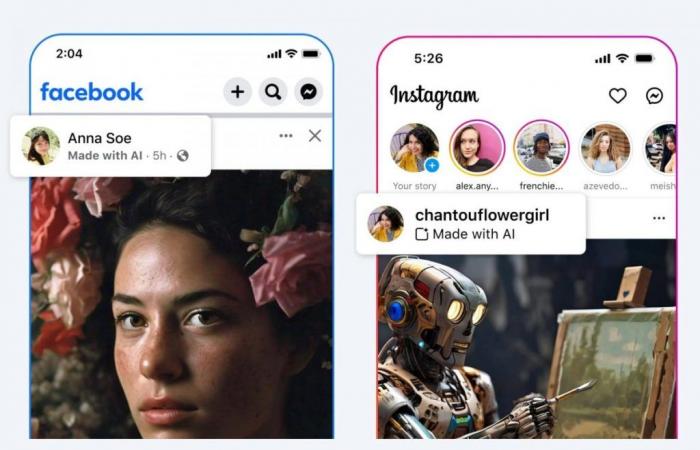Meta has announced that it has updated the“Made with AI” label in “AI info” on its platforms: “As we’ve said from the beginning, we’re constantly improving our AI products and working closely with our industry partners on our approach to AI labeling,” said Meta spokeswoman Kate McLaughlin.
The new label is intended to more accurately represent the fact that the content may have simply been edited, rather than making it appear entirely AI-generated.
Is AI info better than Made with AI?
Meta’s move came after numerous complaints from users who had their photos incorrectly flagged as AI-generated. Former White House photographer Pete Souza highlighted the issue by sharing a photo taken on film during a basketball game 40 years ago that had been flagged as “Made with AI.” Souza speculated that using Adobe Photoshop’s cropping and flattening tools may have triggered the label.
And the problem actually appears to lie in how editing tools like Adobe Photoshop apply metadata to images, and how platforms interpret that metadata. After Meta expanded its policies on labeling AI-generated content, some real photos posted to platforms like Instagram, Facebook, and Threads were then incorrectly marked as “Made with AI.”
The new “AI info” label will start rolling out to mobile apps first, and then to the web version. When users click on the label, they will see the same message as the old label, which provides a more detailed explanation of why the label may have been applied, and may apply to images that are entirely AI-generated or edited with tools that include AI technology, such as Generative Fill. Metadata tagging technologies like C2PA should make it easier and simpler to distinguish between AI-generated images and real images in the future, but that’s not yet the case.
The solution in the end does not seem optimal: in fact, the label does not tell us whether the image is generated by an AI or real and still risks casting doubt on the authenticity of a photo just because the author of the post has changed its size. What do you think about this change to the label by Meta? Do you think it is enough to solve the problem? Share your opinions in the comments!






